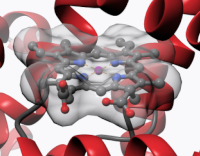Biophysics Colab
Biophysics Colab is a collaboration of biophysicists who are working in partnership with eLife to improve the way in which original research is evaluated. We aim to drive forward the principles of open science by providing an equitable, inclusive, and transparent environment for peer review. Our ambition is to facilitate a publishing ecosystem in which the significance of research is recognised independently of publication venue.
Featured lists
-
Reading List
Articles that are being read by Biophysics Colab.
Curated by Biophysics Colab

-
Curated Preprints
Articles that have been curated by Biophysics Colab.
Curated by Biophysics Colab
Latest preprint reviews
-
ATP-release pannexin channels are gated by lysophospholipids
This article has 12 authors:This article has been curated by 2 groups:Reviewed by eLife, Biophysics Colab
-
Structure and function of the human mitochondrial MRS2 channel
This article has 7 authors:This article has been curated by 1 group:Reviewed by Biophysics Colab
-
Macromolecular condensation is unlikely to buffer intracellular osmolality
This article has 2 authors:This article has been curated by 1 group:Reviewed by Biophysics Colab
-
AlphaFold-SFA: accelerated sampling of cryptic pocket opening, protein-ligand binding and allostery by AlphaFold, slow feature analysis and metadynamics
This article has 4 authors:Reviewed by Biophysics Colab
-
The folding-limited nucleation of curli hints at an evolved safety mechanism for functional amyloid production
This article has 6 authors:Reviewed by Biophysics Colab
-
Structural basis of closed groove scrambling by a TMEM16 protein
This article has 3 authors:This article has been curated by 1 group:Reviewed by Biophysics Colab
-
Semi‐synthetic nanobody‐ligand conjugates exhibit tunable signaling properties and enhanced transcriptional outputs at neurokinin receptor‐1
This article has 2 authors:Reviewed by Biophysics Colab
-
Ion channel thermodynamics studied with temperature jumps measured at the cell membrane
This article has 4 authors:This article has been curated by 1 group:Reviewed by Biophysics Colab
-
Structure of an open KATP channel reveals tandem PIP2 binding sites mediating the Kir6.2 and SUR1 regulatory interface
This article has 5 authors:This article has been curated by 1 group:Reviewed by Biophysics Colab
-
Constitutive activity of ionotropic glutamate receptors via hydrophobic substitutions in the ligand-binding domain
This article has 5 authors:This article has been curated by 1 group:Reviewed by Biophysics Colab
